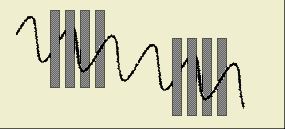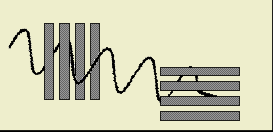The other night, I was thinking about time- a normal activity for an astro-filmmaker (especially one who just had to shove a whole story into a single minute of video). I think it's fascinating that we don't really know anything about time, yet it seems to have always been a part of our reality. It's so intangible, yet integral to science, philosophy, art, and life in general. How do you measure it, really? Every form of measurement is pretty arbitrary- every "standard" having been created by humans for convenience more than anything else.
Still, we know it exists. We feel it pass, sometimes painfully, sometimes fleetingly. It seems to be our measurement of reality (manipulation of time being a common way to imply altered states in film and music).
What the heck is it?
I was thinking about all of this while watching my aquatic roommates float in the current of their aquarium. Do they know that a mechanical pump is making this current? Do they even understand what a current is? For them, it is just something that happens- they know it innately from Nature.
I began thinking about fish in the sea. When the current is turbulent, do they understand that it is because there is a giant hurricane blowing over the water and changing the pressure? How could they? It would blow their little fishy minds to see that giant spinning cloud! ("And why," they might imagine, "does such a thing exist at all?") They don't even see that side of reality, except through a shimmering, blurry lens. All they know is the water.
I feel that we live in a similar reality when it comes to time. Time drives our "currents" (oh yes, pun entirely intended), creating pockets of turbulence and calm. What if we are like fish- unaware of enormous vortices of time that drive us while we swim in our sea of "reality." Almost everyone has experienced deja-vu or even "missing time-" phenomena that challenge the "linear time" reality that we know best.
And are there the "dolphins" of our world who can exist in both worlds (albeit temporarily)? Dolphins use the "mysteries of the world above the water" to ensnare their prey. They blow circles of "bubble nets" around schools of fish. The fish, afraid to pass through the strange shiny bubbles, school together while the clever dolphins take turns picking them off.
(Actually, dolphins love playing with "air reality" in water. For more info, see this article from Scientific American. They seem to be very good at manipulating it!)
I think there are dolphins amogst us. Many people throughout history have claimed to have manipulated time in some way or another. There was also Einstein, who presented the concept of time dilation in his relativity theories (time dilation was later proven). Some of the brightest minds have imagined (and even proven mathematically) some strange time realities- like those involving black holes and wormholes.
And then there are us filmmakers. Some of us just like playing with time. I've never met an experimental filmmaker who hasn't liked playing with slow motion, high-speed, or reversed action!


